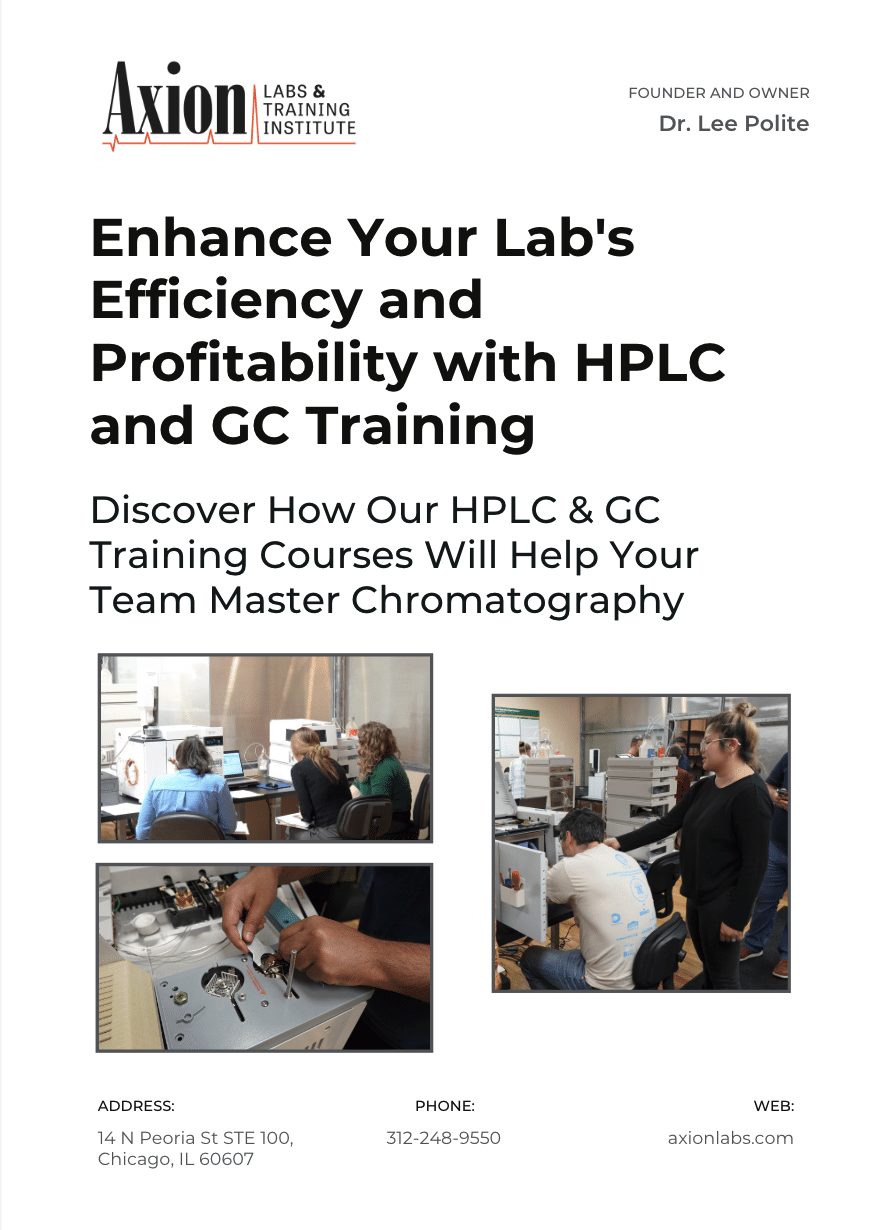When you’re working with Gas Chromatography (GC), one of the most critical steps is getting the sample into the GC.
You might already understand gas flow paths and general instrument operation—but none of that matters if your sample isn’t prepared correctly.
So, let’s break it down: how do you take a raw, neat sample and prep it into something that’s GC-ready?
The Golden Rule of GC Sample Prep: Volatility is King
Here’s the big deal with GC: your sample must be volatile. That means it needs to vaporize—completely. Anything that doesn’t vaporize will just sit in the inlet and never make it to the detector. Ideally, you want a sample that’s 100% volatile. That’s the goal.
Step 1: Dissolve Your Sample
Most GC samples start with dissolving your compound in a solvent.
A good ballpark? Make a 1% solution.
- That’s 1 gram of sample in 100 mL of solvent.
- Don’t want to make 100 mL? Me neither.
- Try 25 mL or 10 mL. I don’t go below 10. Those tiny 5 mL volumetric flasks? Eh… I don’t trust them.
If you’re using 25 mL, just weigh out 0.25 grams of your sample and dilute up to the mark. Done.
What Solvent Should You Use?
Pick a solvent your sample actually dissolves in. Seems obvious, but it’s crucial.
- Hexane is the most common GC solvent—especially for non-polar compounds. GC likes volatile, non-polar stuff, and hexane fits the bill.
- Methanol is a go-to for more polar compounds—especially in drug analysis. If it goes into the human body, chances are methanol will dissolve it.
- Ethyl acetate? Nice middle ground.
There are hundreds of solvents. That’s because GC applies to millions of different samples. Just remember: choose a solvent your sample likes, and make sure everything is volatile before injection.
Step 2: Load Your Sample into a GC Vial
Once your solution’s ready, it’s time to move it into a vial.
Use a 2 mL vial (well, technically 1.8 mL, but we call them 2 mL).
These are the vials autosamplers in both HPLC and GC use. You’ll need at least 0.5 mL in the vial, but I recommend 1 to 1.5 mL. Why? Because if the sample’s too low, the autosampler needle might not reach it. And that’s a frustrating (and confusing) problem to troubleshoot—trust me.
Pro Tip: Avoid Marker Ink!
I use vials with a white writing patch and mark them with a pencil or wax pencil—not a Sharpie. Why? If you can smell the marker, your GC can detect it. That’s contamination you don’t want.
Cap It Right: Screw Cap vs. Crimp Cap
I prefer screw caps, but crimp caps are great too. Just make sure your vial is sealed tight so your solvent doesn’t evaporate. Solvent loss means concentration changes—and that means poor results.
When Direct Injection Isn’t Ideal: Use Headspace GC
Not every sample is liquid, and not every sample dissolves.
That’s where Headspace GC comes in.
Here’s the setup:
- Use a 20 mL vial
- Add a tiny amount of sample—1 or 2 grams or mL
- Crimp the vial tightly
- Analyze the vapor above the sample (not the sample itself)
Say you’re testing soil for gasoline. You can’t dissolve dirt. But you can analyze the vapor above it—that gas smell? That’s what you’re measuring.
Also for solid samples check out pyrolysis GC.
Example:
Headspace is perfect for:
- Residual solvent analysis in pharmaceuticals
- Ethanol detection in blood samples
- Messy matrices where direct injection would gunk up your system
Conclusion: Start Your GC Analysis Right
While optimizing GC instrument parameters is crucial, never underestimate the impact of robust sample preparation. Focusing on the fundamentals – ensuring volatility, choosing the correct solvent, performing accurate dilutions, and employing proper vial handling techniques – forms the bedrock of reliable GC results. Incorporating these practices into your routine workflow will save you time, prevent system contamination, and ultimately lead to higher quality data from your gas chromatograph.
Want to Learn More?
If you’re still reading, you’re clearly interested. Great news—check out my video on GC Operations where I dive deeper into every part of the instrument.
And don’t forget to explore Axion Lite, our free resource library packed with helpful chromatography videos.

